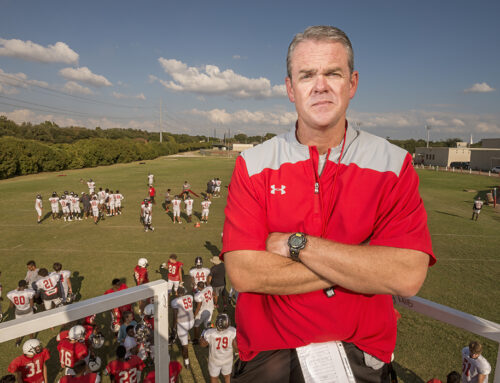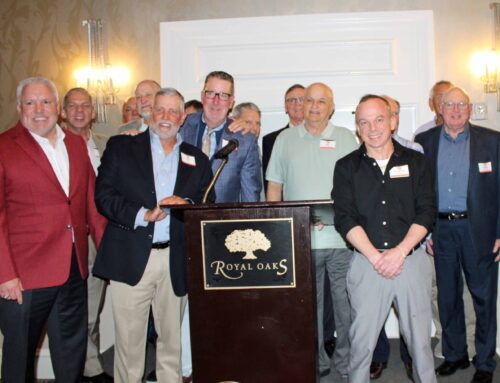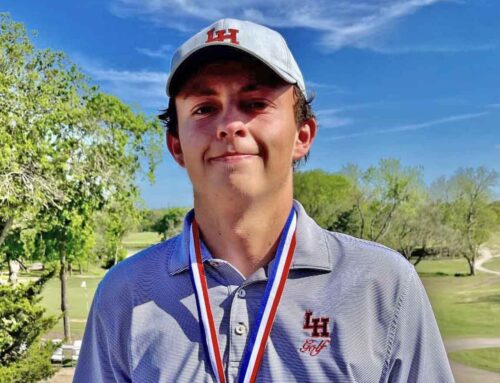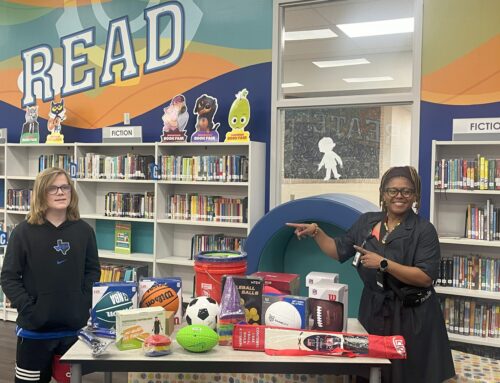“Didn’t you used to be Charlie Waters?” One of the most accomplished players in Dallas Cowboys history, Waters has heard that question more than once. The former All-Pro strong safety was among the marquee names and faces of the “Doomsday Defense” that led the Cowboys to five Super Bowls during his career. Waters, who lives in Lake Highlands, still shares (with Bill Simpson and Ronnie Lott) the all-time NFL record for career postseason interceptions. “You play the game to win championships, so you really need to play your best games at the most pressured times,” he says. “So that record is important to me. I think, personally, that’s what I’m most proud of. I won’t make the Hall of Fame, but I know I played well when I had to. “I started at free safety, and labored at corner back for three years, where to say I struggled would be putting it nicely. I was booed, and I played opposite Mel Renfro, so it didn’t take a Phi Beta Kappa to figure out where the other team was going to throw the ball.”
But then Cornell Green took over at cornerback, allowing Waters to move to strong safety, the position at which the Cowboys envisioned him playing when they drafted him out of Clemson University. Once he settled in at strong safety, he teamed with Cliff Harris to form arguably the greatest safety tandem in NFL history.
“I don’t think there will ever be a safety tandem like that again, for as long as we played together,” Waters says. “To be recognized as the best safeties, to go to Pro Bowls together…that was something you might not see again. I think (current Cowboys) Darren Woodsen and Roy Williams are great, but the problem is they won’t play together as long because of their age difference. It’s hard to keep players together for a long time these days.”
After retirement, Waters coached for a while, working his way up to the Denver Broncos’ defensive coordinator. Today, his involvement in the game consists of pre-game broadcast work on KLUV, the flagship station in the Cowboys’ radio network.
“That satiates my appetite for football,” Waters says. “I get to watch film – I get the coaches’ copy of our games, and I study the opponents coming up, looking at trends, etc.”
Waters now negotiates electric rights for natural gas compressor units for Energy Transfer Company – where, naturally, Harris also works. But his career is only a part of what keeps this Lake Highlands resident occupied these days. He’s also an accomplished artist – he painted the cover of “Tales from the Dallas Cowboys,” a book he co-wrote with Harris, as well as the cover of “Heroes Are Hard to Find,” by Lakewood resident Mike Looney.
“I always did stuff (artistically) that was in line with my discipline,” Waters says. “I studied Chinese brush painting, which goes back to calligraphers who sit all day doing calligraphy. They spend three hours to make the ink for 15 minutes of painting. I’ve always had that kind of discipline, that kind of preparation in things I do. I think that’s part of how I went from a losing cornerback to a winning safety.”
Waters almost stayed in coaching, surfacing in 2002 as a candidate for the coaching job at SMU, a spot he says he pursued “very seriously.” It wouldn’t have been his first college gig – he coached at the University of Oregon after being released in Denver under head coach Wade Phillips.
“I had become a little disenchanted with the NFL,” Waters says. “Coaching in college was great – the kids were great, the enthusiasm…In the NFL, you have pressure to play certain free agents, but I really got re-charged when I went to Oregon.”
He left because of what Waters describes as a “huge family tragedy.” His oldest son, Cody, passed away in his sleep just before his 18th birthday. Doctors were never able to establish a cause of death.
“We moved back to Texas to heal, but there were no coaching jobs open, which was probably good, because I was kind of brain dead for about a year,” he says. “When (SMU) started courting (current Mustang head coach Phil) Bennett, they also called me. I thought I was perfect for the job. I knew I could recruit, and I understand alumni relationships.”
Waters added that while he did want the position, there’s a side of him that’s glad he didn’t get it, and he expresses his respect for Bennett.
“I don’t know if I could have gone 0-12 (as Bennett did in 2003),” Waters says. “I really like Coach Bennett. I like his fire. He’s a very good coach.”
Waters has had other opportunities to return to coaching – he was approached by Steve Spurrier about becoming the University of Florida’s defensive coordinator – but says SMU might be the only job he would take. He and wife Rosie have two other sons – Ben, 22, is a former golfer at LHHS who graduated last year from the University of Texas, and Cliff (so named because of his father’s friendship with Harris and the fact that he was born on Harris’ birthday), 18, is a freshman at UT, having earned a track scholarship for his prowess as a high jumper – and they want to remain in the area.
“My wife’s family is all here,” Waters says. “It’s a nice place to live.”
Preston Pearson epitomizes characteristics many feel today’s professional athletes don’t have: He’s a team player who understands his role, and he has an ability to identify a problem and figure out a way to solve it.
Those characteristics may be crucial in his business life, but they are traits that he honed during his days as a running back for the Dallas Cowboys. Pearson played from 1967-1980, the last six of those seasons in Dallas (the first three were with the Baltimore Colts and then five with the Pittsburgh Steelers). Shortly after his arrival in Dallas, the Cowboys spent the first pick in the draft on Tony Dorsett, the Heisman Trophy-winning running back from the University of Pittsburgh. Pearson knew his days as the Cowboys’ starting running back were numbered.
“When Tony came here in 1977, he had just won the Heisman Trophy, he was the No. 1 pick – everyone knew he was going to play,” Pearson says. “One of the things I love about (head coach) Tom Landry is that he made Tony earn that position, and I held him off for 10 games. I could have pouted about it, but if I had, I would have been on the bench and eventually out of the league.”
Even with the arrival of Dorsett, Landry saw the need for Pearson, so he created a new role – almost a new position – for his veteran back. Today, the third-down back is a game staple, relieving a team’s primary running back in passing situations, either as an extra receiver or as an extra blocker.
“Tom Landry gave me a chance, he gave me life,” he says. Pearson’s new role extended his career, earning him a reputation as a clutch receiver with a knack for the big play, drawing the ire of other teams and their fans, especially with the Cowboys’ biggest rivals.
He also became a favorite of Dallas fans, a statue he still enjoys today.
“Dallas is special in the way it treats the Cowboys,” Pearson says. “Even now, 25 years later, I have people coming up to me, when I’m playing golf, in restaurants – even restrooms – talking about the old days. They ask me about games, even specific plays I made that I’d long since forgotten.
“It’s special because of the history, the tradition of the Cowboys before me…the Tom Landrys, the Bob Lillys. When you wear that star, it’s like wearing the (New York) Yankee pinstripes. You have a lot of tradition to uphold. I realized that when I came down here.”
Pearson keeps close tabs on today’s Cowboys, although he doesn’t attend many games.
“No, that’s not something I like to do,” he says. “I don’t mind people coming up to talk to me. Fans are fans, and I love them. But I would just as soon stay at home, grab a beer or a soda…”
When he retired, Pearson moved quickly into the next phase of his life, although letting go of his playing days wasn’t always easy.
“I remember a few days after I retired, I was driving near the practice facility (near Abrams and Forest) – just out doing ‘honey-do’ things – and before I knew it, I had already turned left into the practice facility. It was such a part of my life, part of my routine, but it was time to move on,” he says.
Today, Pearson is president of Pro-Style Associates, which books athletes (and other celebrities, including actors and politicians), for public appearances. Many of his old Cowboys teammates are among his most sought-after speakers.
Pearson is one of the rare people who successfully mixes his business and personal lives; Janie Tilford is his partner (vice president) with Pro-Style Associates and in his personal life. Pearson also has two sons: Greg is a photojournalist with the Shreveport (La.) Times, while Matt made 59-year-old Pearson a grandfather for the first time nearly two years ago with the birth of his daughter.
As for football, it’s something that will always be in Pearson’s blood.
“I’ll always be a former Dallas Cowboy. That goes to the fact that we had some great football teams, great rivalries, and of course the Super Bowls.”
As much as he’s a fixture in the annals of Cowboys lore, Preston Pearson also is a fixture in the Lake Highlands community.
“I’ve been in Dallas since 1975, and in this location since 1978,” he says. “The proximity to the Cowboys’ practice facility was a major factor, that’s true. But at that time, LBJ (Freeway) was in its infancy, and the Lake Highlands and Richardson schools were projected to be good – they still are.
“This is just a neat place to be,” he says.





